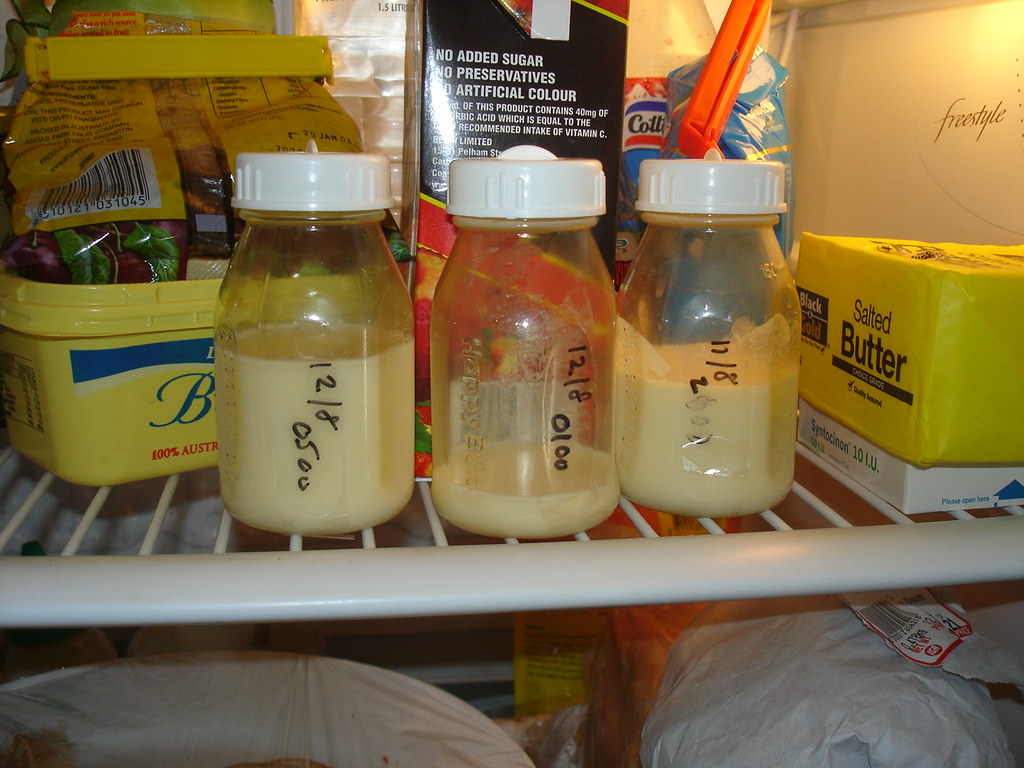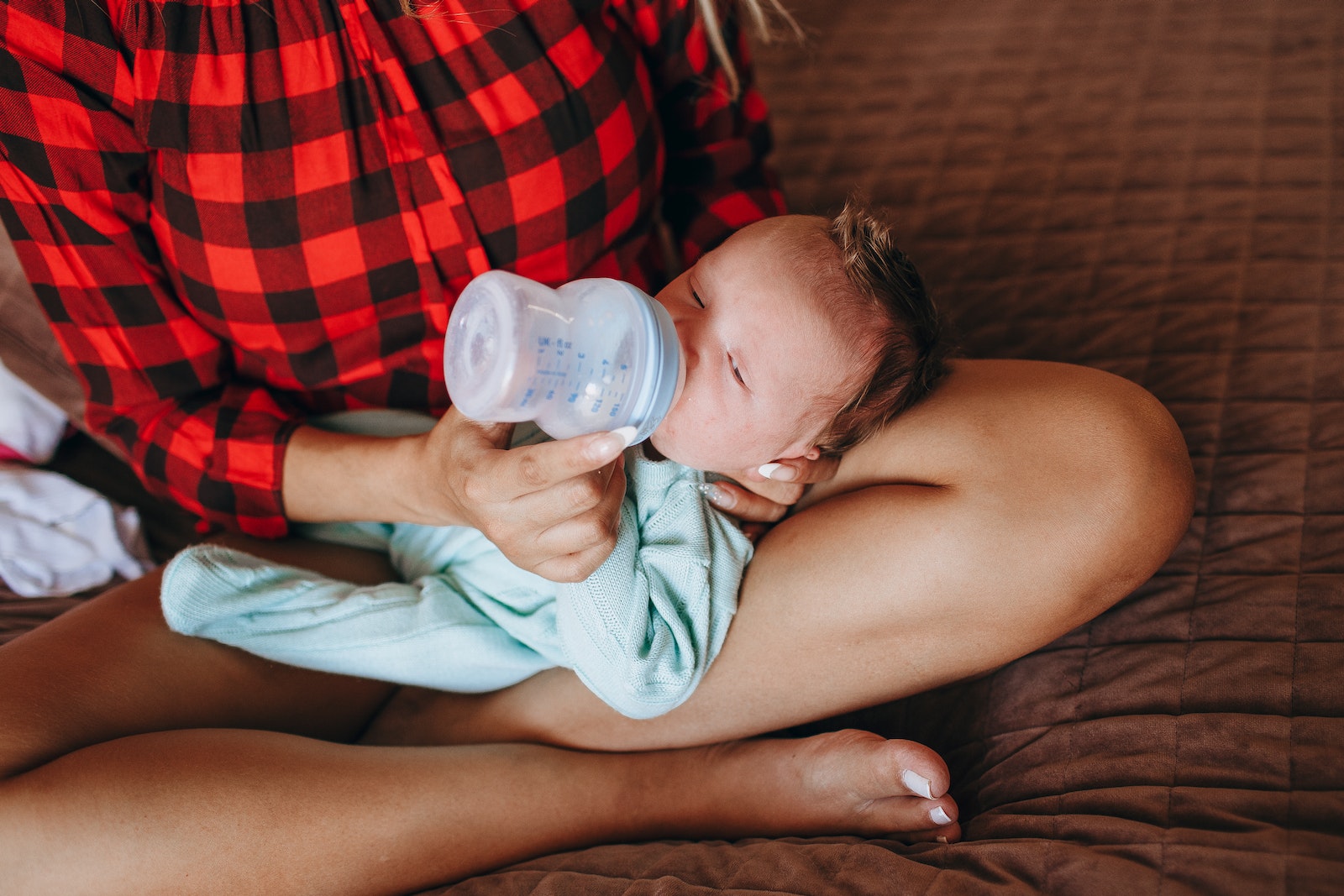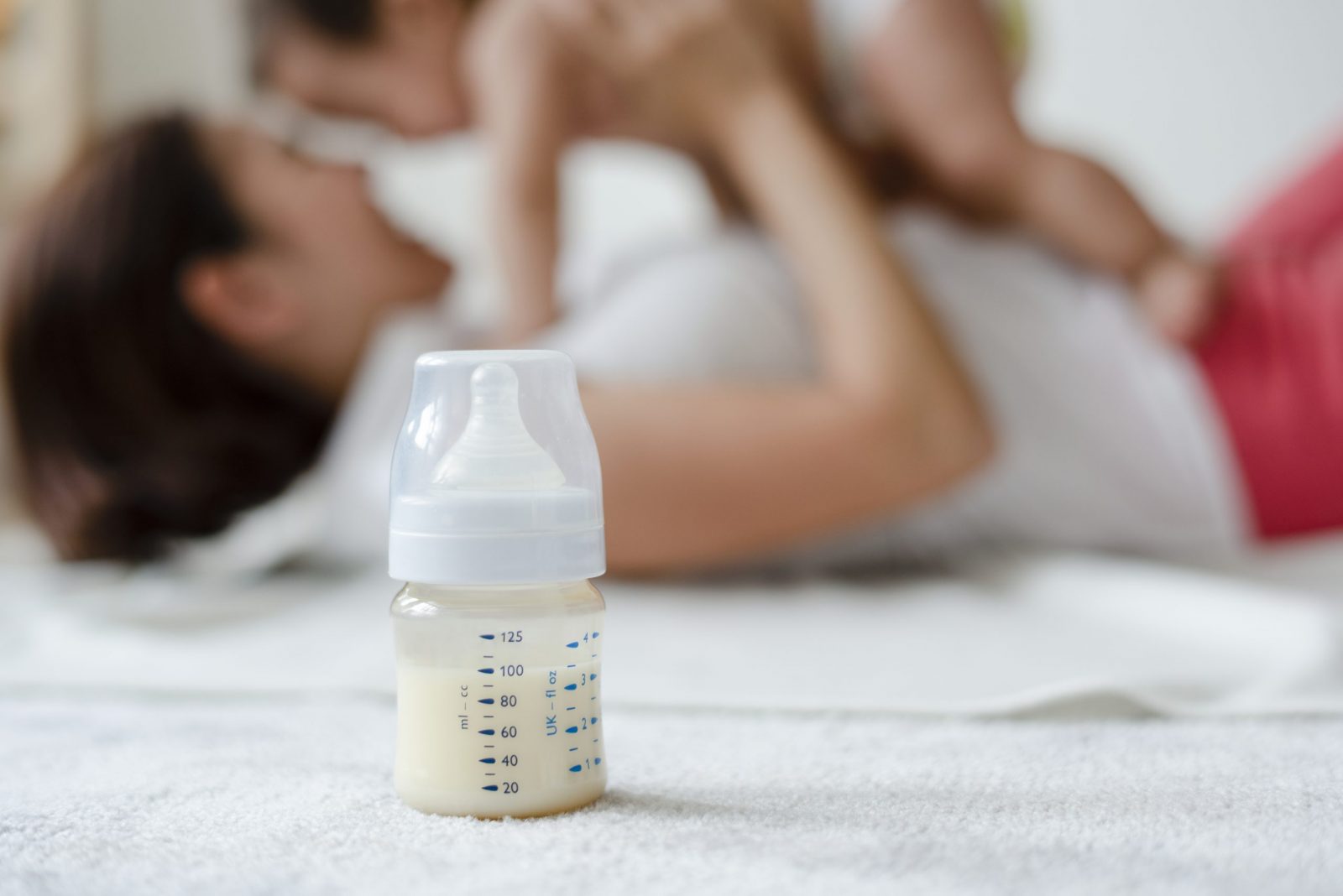Breastfeeding is an essential practice for many new parents, providing their infants with the necessary nutrients for growth and development. However, storing breast milk can be a challenging task, especially when it comes to handling warmed milk. One common concern for parents is whether or not they can safely refrigerate warmed breast milk again.
A general rule to remember when it comes to milk storage is the “rule of 4’s.” Breast milk is safe for consumption for four hours at room temperature, four days in the back of a refrigerator, and four months in a regular freezer. Based on this, it is possible to refrigerate warmed breast milk again, as long as it is used within a reasonable time frame and properly handled to avoid bacterial growth or contamination.
Parents should ensure that they follow the appropriate guidelines for storing, thawing, and reheating breast milk to ensure their baby receives the best possible nutrition. Paying close attention to storage time frames and temperatures will help minimize any potential risks associated with re-refrigerating warmed breast milk.
Reader's Roadmap
Understanding Breast Milk Storage
Breast milk storage is an essential aspect of breastfeeding, especially for working mothers or situations where direct breastfeeding is not possible. Proper storage ensures that the nutrients and immunity-boosting components in breast milk remain intact and safe for the baby.
Freshly expressed breast milk can be stored in various ways, depending on the duration and purpose. It can be stored at room temperature (up to 77°F) for up to 4 hours and in the refrigerator for up to 4 days. For longer storage, a freezer or deep freezer is recommended. Breast milk can last for about 6 months in a freezer, while deep freezers can maintain its quality for up to 12 months.
When storing breast milk, using food-grade containers is essential to avoid contamination. Breast milk storage bags or glass containers with leak-proof lids are optimal choices. Always label the container with the date it was expressed to ensure proper rotation and usage.
For mothers on the go, an insulated cooler with frozen ice packs can maintain the freshness of breast milk for up to one day. This is particularly helpful when reliable refrigeration or freezing options are unavailable.
Warming breast milk for feeding should be done gently without overheating or bringing it to a boiling point, as this can damage the milk’s nutrients and immunological properties. After warming, it is essential to remember that any leftover breast milk should be used within 2 hours or discarded to prevent bacterial growth. As a safety precaution, warmed breast milk should not be refrigerated again.
In summary, understanding the various storage options and guidelines for breast milk is crucial for maintaining proper safety and nutritional value. By adhering to these practices, you can ensure that your baby receives the full benefits of breast milk.
The Science of Breast Milk Temperature
Breast milk, also known as liquid gold, provides essential nutrients for your baby’s growth and development. Ensuring that it is stored and served at the correct temperature plays a significant role in maintaining its quality, safety, and nutritional value.
When it comes to warming breast milk, it is crucial to avoid overheating the milk as it may result in the loss of essential nutrients. One common method for heating breast milk is placing the sealed milk container in a bowl of warm water or using specialized bottle warmers. Care should be taken to check the temperature of the milk before feeding it to the baby to avoid scalding. Gently swirling the milk can help in even distribution of heat and eliminate hot spots.
But what if, for some reason, your baby doesn’t finish the warmed breast milk? Can it be refrigerated again? The answer is yes. Warmed breast milk can be refrigerated again as long as it is properly stored and used within a short period. However, experts recommend minimizing the number of times breast milk is reheated to ensure its quality.
Regarding storage guidelines, the following rules of 4’s can be followed for storing breast milk:
- 4 hours at room temperature when freshly expressed
- 4 days in the back of the refrigerator
- 4 months in a regular freezer
- 6-12 months in a deep freezer
These recommendations help in preserving the quality and safety of breast milk.
In summary, the temperature is a crucial aspect to consider when storing, heating, and serving breast milk for your baby. Proper handling of breast milk ensures the retention of its nutrients, safety, and quality.

Breast Milk Extraction and Preservation Methods
Breastfeeding is an essential process for newborns as breast milk provides them with nutrients and antibodies necessary for their growth and development. Despite its importance, some mothers may not be able to provide milk directly from the breast. In these cases, it’s important to know proper methods of extracting and preserving breast milk.
One common method for extracting breast milk is using a breast pump. Mothers can choose from manual or electric breast pumps, depending on their needs and preferences. A breast pump helps to express breast milk efficiently and maintain milk supply even when the baby is not directly breastfeeding.
When storing expressed breast milk, it’s vital to implement proper preservation techniques to ensure the milk remains safe and nutritious. Breast milk can be stored in the refrigerator, freezer, and even at room temperature for short periods. To safely store breast milk at different temperatures, consider the following guidelines:
- Room temperature: Up to 4 hours (ideal temperature: 77°F or 25°C)
- Refrigerator: Up to 4 days (ideal temperature: 39°F or 4°C)
- Freezer: 6 months (ideal temperature: -4°F or -20°C)
It’s important to use appropriate containers for storing the expressed milk. Freezer bags specifically designed for storing breast milk are a suitable option as they are made of materials that can withstand freezing temperatures while keeping air and contaminants out.
To minimize waste, store expressed breast milk in small portions that can be used individually, making it easier to thaw and warm only the required amount for each feeding. Label the storage containers with the date and time of extraction, and always use the oldest stored milk first.
Understanding and applying these methods of extracting and preserving breast milk can help ensure that babies receive the full benefits of breastfeeding, even when they cannot be fed directly from the mother.
Why Re-refrigerating Warmed Milk Is Discouraged
Refrigerating warmed breast milk again is discouraged due to the risk of contamination and bacteria growth. When breast milk is warmed, the temperature change can create an environment in which bacteria begin to multiply. If the warmed milk is not consumed within a short period, usually two hours, it becomes more likely that harmful microorganisms will develop, posing a potential risk for the baby’s health.
Furthermore, the nutrients in breast milk can become unstable when exposed to multiple temperature changes, ultimately affecting its nutritional quality. This is another reason why re-refrigerating warmed breast milk is not recommended.
In order to minimize the risk of contamination and ensure that your baby receives the best possible nutrition, it is crucial to follow specific guidelines for storing and handling breast milk. For instance, fresh breast milk should be refrigerated immediately if it is not going to be used right away, and it can be safely stored in the refrigerator for up to four days.
When it is time to feed your baby, warm only the amount of breast milk you anticipate they will consume in a single feeding. Use warmed milk within two hours and discard any leftovers. By following these guidelines, you can confidently provide your baby with the safest and most nutritious breast milk.
Guidelines to Warm and Thaw the Breast Milk
Thawing and warming breast milk properly is crucial to ensure its nutritional value remains intact. Here are some guidelines to follow for safe and effective breast milk thawing and warming:
Firstly, avoid thawing breast milk using a microwave, as it can create hot spots that might scald the baby and may also destroy the milk’s nutritional properties. Instead, opt for placing the frozen milk container in a bowl filled with warm water. This method helps retain the natural enzymes and antibodies present in the milk. Another option is to run the container under warm tap water for a few minutes.
If time permits, thawing breast milk in a refrigerator is the gentlest and most recommended method. Simply transfer the milk from the freezer to the refrigerator and let it defrost slowly. This process can take up to 12 hours, so planning ahead is important. Once thawed, the milk can be stored in the refrigerator for up to 24 hours before use.
For a quicker approach, a bottle warmer can be used. Always follow the manufacturer’s instructions on how to use the device safely and effectively. Make sure the milk is heated evenly by gently swirling the bottle after warming, rather than shaking it vigorously.
Avoid using a stove to heat breast milk, as direct heat can damage its nutritional components. Instead, consider placing the milk in a heatproof container and setting it in a pan of warm water on the stove. Heat the water on low, and stir the milk occasionally to ensure even warming.
In conclusion, it is important to follow the appropriate thawing and warming methods for breast milk to maintain its nutritional value and ensure the safety of the baby. Opt for gentle techniques like warm water baths, refrigerator thawing, or using a bottle warmer, and avoid using microwaves or direct heat from stoves.
Importance of Hygiene
Maintaining proper hygiene when handling breast milk is crucial to ensure the safety and health of your baby. As breast milk is a perishable food, it can become contaminated by bacteria if not handled correctly. Washing your hands is a simple yet effective way to prevent the spread of germs.
Before expressing or pumping breast milk, it is essential to wash your hands thoroughly with soap and water for at least 20 seconds. Pay extra attention to the fingertips, between fingers, and under fingernails, as these areas tend to harbor the most bacteria. After washing, dry your hands with a clean towel or air dry them.
When storing breast milk, use clean and sterile containers to prevent contamination. Ensure that the containers are sealed properly to avoid any spills or potential exposure to bacteria. Label each container with the date of collection to keep track of the milk’s freshness.
Additionally, cleanliness of the breast pump and its parts is essential to maintain hygiene. Follow the manufacturer’s guidelines for cleaning and sterilizing all the components of the breast pump after each use. This step will help to remove any residual milk or bacteria and keep the pump functioning smoothly.
In case you need to reheat breast milk, use a gentle warming method, such as a warm water bath or an approved bottle warmer. Avoid using a microwave, as it can cause uneven heating and might damage the milk’s nutritional content. Moreover, overheating can further increase the risk of bacteria growth.
By adhering to these hygiene practices, you will ensure that the breast milk remains safe and nutritious for your baby, while minimizing any risks associated with improper handling and storage.
Handling Leftover Breast Milk
Handling leftover breast milk properly is essential to ensure that it remains safe and nutritious for your baby. When it comes to re-refrigerating warmed breast milk, there are certain guidelines you should follow.
Leftover breast milk that has been warmed can be refrigerated again, but only under specific conditions. Re-chilled breast milk should be used within 24 hours, and it is important not to leave the milk at room temperature for more than two hours before refrigerating it. Remember, once you have rewarmed the milk after refrigerating it again, it should no longer be stored and must be consumed.
If you have leftover breast milk at room temperature, it can be safely stored for up-to four hours. However, if you are unsure of how long the milk has been at room temperature, or if it has been exposed to heat, it is best to discard the milk to avoid any potential risk of bacterial growth.
To properly store your breast milk in the refrigerator, pour the remaining milk into a clean and appropriately labeled storage container. Ensure the container is tightly sealed to prevent any possible contamination or spillage. Keep in mind that freshly pumped breast milk can be stored in the refrigerator for up to four days.
For those with frozen breast milk, the same concept applies. Once you’ve thawed and warmed the milk, you can refrigerate it again, but it should be used within 24 hours, and never be refrozen.
In summary, re-refrigerating warmed breast milk is possible, but it must be handled with care in terms of timing and storage. These guidelines will help ensure that your baby receives safe, nutritious breast milk and that you minimize wastage.

The Role of Breast Milk Components
Breast milk is a complex and dynamic fluid that contains numerous components essential for the growth and development of infants. Two of the crucial entities in breast milk include antibodies and fats, each playing a significant role in a baby’s well-being.
Antibodies in breast milk help protect the infant from infections and illnesses. These immune-boosting proteins are passed from the mother to the baby, providing passive immunity in the early stages of life. The most abundant antibody in breast milk is secretory immunoglobulin A (sIgA), which helps to defend against pathogens that enter through the baby’s mouth and gastrointestinal tract.
On the other hand, fats are essential for an infant’s developing brain, eyes, and nervous system. Breast milk contains a variety of healthy fats, including long-chain polyunsaturated fatty acids (LCPUFAs), which are crucial for cognitive and visual development. Fats also provide energy and aid in the absorption of fat-soluble vitamins, such as vitamins A, D, E, and K.
When breast milk is stored, warmed, and handled appropriately, its components typically remain intact and retain their nutritional value. However, improper storage or reheating methods can potentially compromise the quality of some of these vital components. For instance, high temperature or extended periods at room temperature may cause a decrease in antibodies and denaturation of some heat-sensitive proteins.
Regarding the question of re-refrigerating warmed breast milk, experts advise caution. Repeated warming and cooling can potentially increase the risk of bacterial proliferation, which could impact the milk’s safety and nutritional quality. It is essential to follow proper storage guidelines in order to maintain the integrity of breast milk components and ensure that the infant receives optimal nourishment.
In summary, the roles of antibodies and fats in breast milk are critical in promoting the growth, development, and immune protection of infants. Appropriate breast milk handling and storage practices are essential to preserving these valuable components and providing the baby with safe and nutrient-rich nourishment.
Giving Breast Milk to Childcare Providers
Childcare providers play a crucial role in supporting breastfeeding and ensuring that breast milk is safely handled and prepared. When entrusting childcare providers with breast milk, it is essential for parents to provide clear instructions and some necessary information.
Breast milk may be brought to the childcare facility in prepared bottles with freshly expressed or pumped milk or thawed (previously frozen) milk. It is recommended to provide milk in small amounts of 2 to 4 ounces to minimize waste if the child does not finish a bottle. Bottles should be labeled with the current date and the child’s name to avoid confusion and ensure proper handling.
There are several options for thawing frozen breast milk, such as placing it in the refrigerator overnight or using warm or lukewarm water to thaw it gradually. Childcare providers should avoid using hot water to thaw or heat the milk, as this can negatively affect milk quality.
Proper hygiene is essential for childcare providers when preparing and feeding bottles to infants. They should wash their hands carefully with soap and water before preparing any bottle and avoid touching bottle nipples with their fingers. It is also essential to avoid warming breast milk on the stove or in the microwave, as this can cause the milk to curdle or create hot spots that may harm the child.
Freshly expressed breast milk can be stored at room temperature for up to six hours, but it is optimal for childcare providers to use or store the milk within four hours, especially in warm environments. If breast milk needs to be stored for an extended period, an insulated cooler with ice packs can preserve the milk for up to one day.
By following these guidelines, childcare providers can confidently and appropriately handle and feed breast milk to infants in their care, ensuring proper nutrition and support for breastfeeding families.







Leave a Reply
View Comments